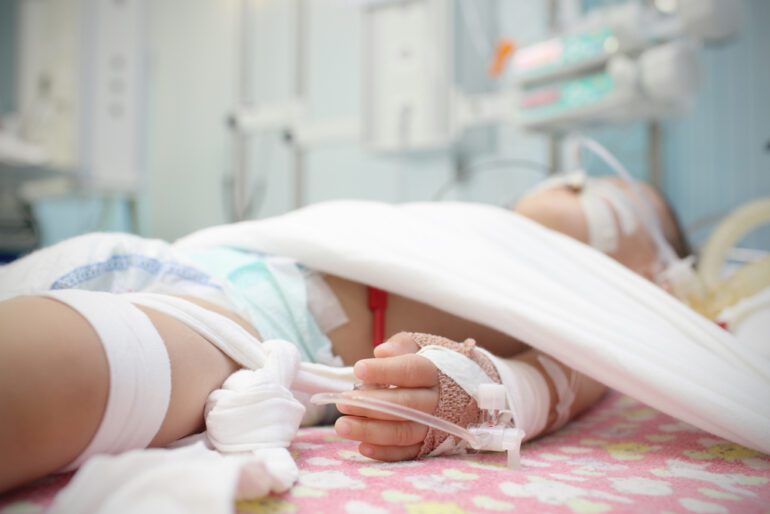TL;DR:
- Dr. Robinder Khemani utilizes machine learning to optimize ventilator support for critically ill children.
- Patient-ventilator asynchrony (PVA) poses challenges in treatment alignment.
- The research aims to define PVA, its subtypes, and its impact on outcomes in pediatric cases.
- Collaborative efforts span across international medical institutions for comprehensive insights.
- Machine learning algorithms are developed to identify PVA patterns, improving recognition accuracy.
- The study merges data from diverse sources to validate algorithms and automate PVA detection.
- Enhanced interaction monitoring ensures tailored ventilator support, minimizing potential risks.
Main AI News:
The intricate dynamics between critically ill children and the ventilator support they rely upon have gained fresh insight from cutting-edge machine learning techniques. Addressing a significant challenge in the medical field, Robinder Khemani, MD, MsCI, a dedicated Attending Physician specializing in Pediatric Intensive Care at Children’s Hospital Los Angeles, has harnessed the power of machine learning to revolutionize the way children’s ventilator support is managed.
A pressing concern within this domain is patient-ventilator asynchrony (PVA), an intricate misalignment between a child’s natural breathing rhythm and the ventilator’s delivery pattern. This PVA, when left unnoticed, can be detrimental to the child’s health, potentially exacerbating their condition. While the impacts of PVA are extensively studied in adults, their implications for children are less understood but equally consequential. Dr. Khemani and his dedicated research team at Children’s Hospital Los Angeles, in partnership with hospitals abroad, have embarked on a pioneering journey propelled by a $3.4 million grant from the National Institutes of Health.
Their mission involves unraveling the frequency and risk factors associated with diverse PVA scenarios in critically ill children. By collaborating with medical institutions in Canada and the Netherlands, these experts are not only determining the independent correlation between PVA and clinical outcomes but also unearthing the physiological consequences when a child’s natural breathing rhythm doesn’t harmonize with the ventilator’s rhythm.
Ventilator support for children becomes imperative under various circumstances, ranging from severe pneumonia to acute respiratory distress syndrome (ARDS), both of which can lead to compromised lung function due to inflammation and fluid accumulation. Paradoxically, the initial body response to such conditions can inadvertently cause more harm than the initial cause itself.
Dr. Khemani elucidates, “Procedures aimed at aiding these severely ill children can inadvertently introduce unforeseen complications.” Among these complications, ventilator-induced lung injury takes center stage, potentially causing cardiac and renal damage or rendering children susceptible to future lung-related disorders.
Moreover, the intricate interplay between medical interventions, including medications and sedation, can negatively impact brain function. “We tread carefully, balancing risks and benefits, with the ultimate goal of liberating them from the ventilator at the earliest suitable juncture,” notes Dr. Khemani.
Pinpointing Patient-Ventilator Mismatch through Advanced Analytics
Recognizing the multifaceted landscape of PVA, Dr. Khemani underscores the need for a standardized framework to classify and measure different subtypes of PVA, particularly within the pediatric context. The variety of patient characteristics, such as weight, age, and size, contributes to diverse respiration patterns. Furthermore, these patterns can evolve during a child’s stay in the pediatric intensive care unit. However, the existing studies lack a uniform classification and measurement approach for PVA subtypes, thereby hampering comprehensive analysis.
The breakthrough lies in the application of machine learning algorithms, which exhibit remarkable aptitude in recognizing PVA. Collaborating with the Virtual Pediatric Intensive Care Unit (vPICU) at Children’s Hospital Los Angeles, Dr. Khemani’s team has devised innovative machine learning algorithms adept at identifying diverse breathing asynchronies in ventilated children.
Their research methodology involves consolidating measurements from 200 children with data from an analysis of 350 children encompassing other studies, including an ongoing clinical trial investigating a novel ventilator strategy. Dr. Khemani envisions an outcome where robust algorithms will be created and validated across multiple hospitals, utilizing data from an extensive pool of children. Simultaneously, an automated tool, driven by machine learning, will be devised to identify PVA through meticulous analysis of ventilator data. This tool is designed to monitor real-time changes in patients’ conditions, potentially alerting medical teams to the need for adjustments in ventilator settings.
Empowering the Child-Ventilator Interaction
In an endeavor to maximize the efficacy of ventilator support while minimizing risks, medical practitioners aspire to maintain the child’s active engagement in the breathing process. This aspiration is at the core of Dr. Khemani’s study, wherein the minutiae of child-ventilator interaction are continuously monitored. This vigilant oversight ensures that the ventilator aligns seamlessly with the child’s needs, providing support precisely when required.
The transformative potential of Dr. Khemani’s work is poised to redefine the landscape of pediatric ventilator support. By integrating advanced machine learning techniques, medical professionals are poised to establish a new era of personalized care, optimizing patient outcomes and solidifying a brighter future for critically ill children in need of ventilator assistance.
Conclusion:
The integration of advanced machine learning into pediatric ventilator support has the potential to reshape the medical landscape. Improved PVA recognition and personalized care strategies can lead to better outcomes for critically ill children. This advancement holds the promise of not only enhancing patient care but also presenting significant opportunities for innovation within the medical technology market.

